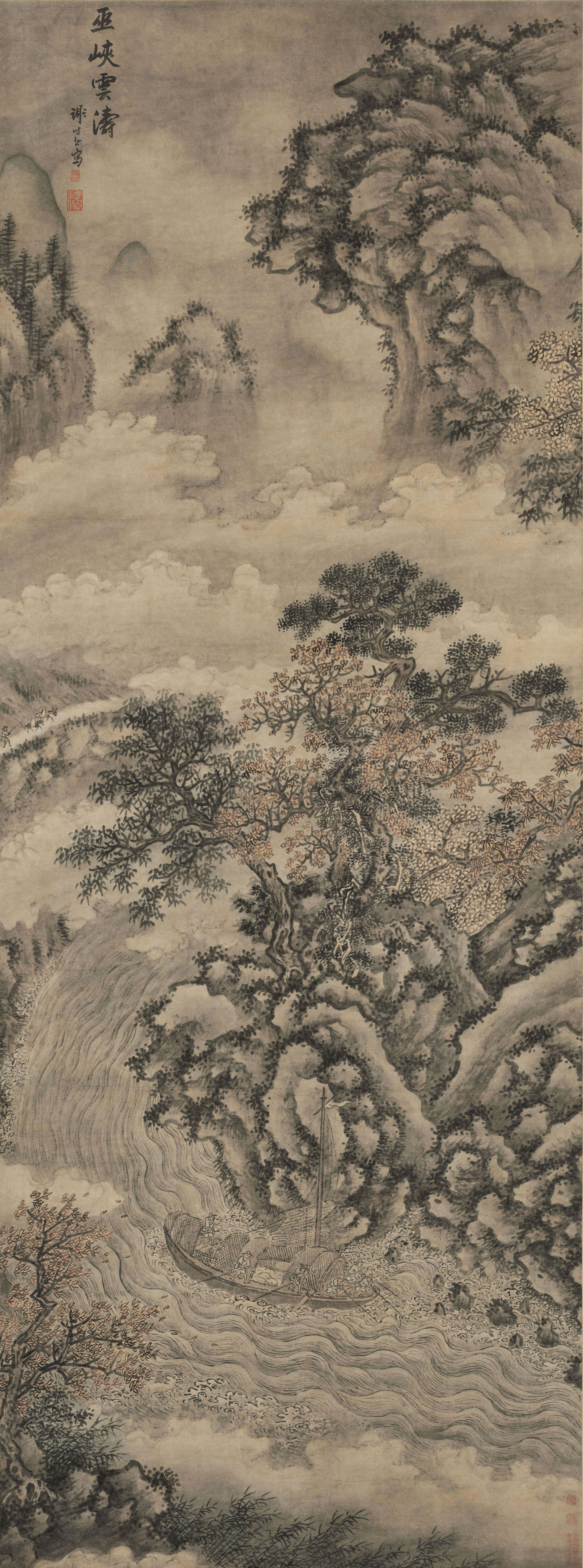The Southern Dynasty painter Sheikh wrote in the Catalogue of Ancient Paintings, "Who are the six Dharmas? First, the vivid rhyme is also; second, the bone method is also used in the pen; third, the pictogram of the object is also; fourth, the color with the class is also; fifth, the business position is also; sixth, the transfer mold writing is also."
Qian Zhongshu gave a new interpretation of the sentence reading of the "Six Laws", that is, "He of the Six Laws." First, the rhyme, vivid is also; second, the bone method, with the pen is also; third, the object, the pictogram is also; fourth, with the class, the color is also; fifth, the operation, the position is also; sixth, the transmission, the model is also. ”
Now, according to the traditional sentence reading, the "six laws" are explained separately.
Vividness means that the works and the images depicted in the works have a vivid temperament and rhyme, which is full of vitality. Qi rhyme, originally the words used by Wei and Jin Pinzao characters, such as "wind rhyme", "wind rhyme", etc., refers to the spiritual temperament, sentiment and rhyme displayed by the characters from their postures and expressions. A similar concept appeared in the theory of painting, first to measure the figures in the paintings, and later gradually expanded to evaluate works other than figure paintings, and even a certain form factor of painting. Qi rhyme and conveyance are consistent in the fundamental point of explaining the spiritual characteristics of the character image, but the word "transposing god" in Gu Kaizhi and even later generations mostly refers to the inner sentiment conveyed by the face of the character, especially the eyes, while the qi rhyme refers more to the inner emotion conveyed by the whole character, especially the posture of the speech, or the externalization of the inner emotion.

Wuxia Yunhai Chart Ming Dynasty Xie Shichen
Bone pen is the so-called bone method and the brush method closely related to it. "Bone method" was originally a concept of physiognomy, and later became a language for people to observe the identity and characteristics of characters, which was very popular in Han and Wei. Wei and Jin people's items algae, in addition to words such as "wind rhyme", are commonly used to comment on "bone" and "wind bone". The word "bone" is a figurative concept, and "bone" and "bone strength" are used metaphors to illustrate the rigidity, decisiveness and external manifestations of people's inner character. Sheikh's use of the "bone method" has turned to the artistic expression of bone power, strength and beauty with a pen. After Sheikh, the bone method became an important criterion for the evaluation of paintings in successive dynasties, which was the corresponding aesthetic principle that the material tools and national styles unique to traditional painting inevitably produced, and it in turn promoted the development of the national style of painting.
Jun bone figure Southern Song Dynasty Gong Kai
The object pictogram refers to the painter's depiction to resemble the reflected object. For the painter, the object is to portray the morphological appearance of the object. In the Six Laws, the pictogram problem is placed in the third place, indicating that in the Southern and Northern Dynasties era, painting aesthetics attached great importance to the authenticity of the shape and the object depicted. However, it is placed after the qi rhyme and bone method, which shows that the artists at that time have a rather profound grasp of the relationship between art and reality, external expression and inner expression.
Pine Ape Diagram Southern Song Dynasty Muxi
Coloring with class is the principle of color. Endowment, granting, cloth. Coloring is color casting. With the class, interpreted as "with things". The "class" here is said to be a "category", that is, a "thing". Following the class means to follow the color image class, so it is the same as giving color.
Furong Jinji Diagram Northern Song Dynasty Zhao Yao
The operating position is said to be the composition of the painting. In the Tang Dynasty, Zhang Yanyuan read "business position" together, and "position" was gradually understood as a noun in the dynamic guest structure. He said, "As for the position of the business, the painting is the general need", and regarded the arrangement of the composition as the outline of the painting. The position must be through the camp, or the composition must be arranged with painstaking arrangement, and the actual composition and thinking and conception are regarded as one, which is a profound insight. In this regard, there are many incisive expositions on the theory of painting in the past.
Xishan Xinyu Figure Yuan Dynasty Ma Wan
Transposing is referring to copying a work. Transmission, transfer also; or interpreted as teaching, circulation, delivery. Mold, law also; through imitation, imitation. Write also interpret as copy. The function of modeling, one is to learn the basic skills, the other is to use it as a means of circulating works, and sheikh does not equate it with creation, so it is placed at the end of the six laws.